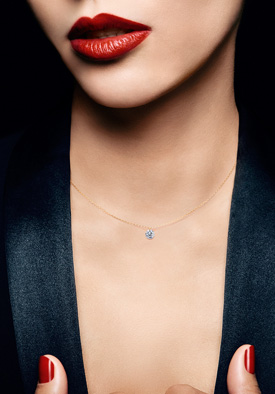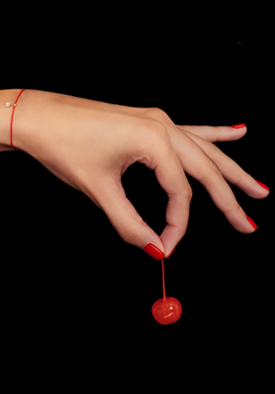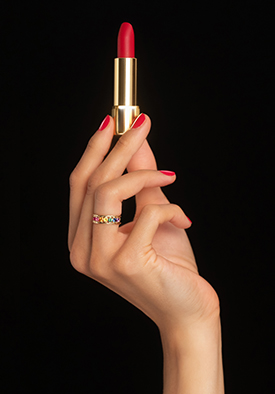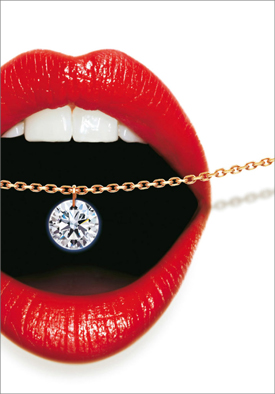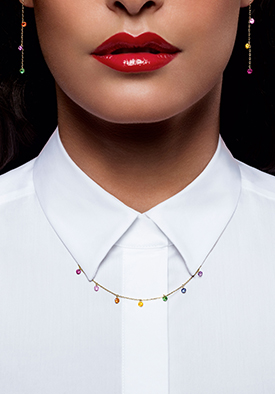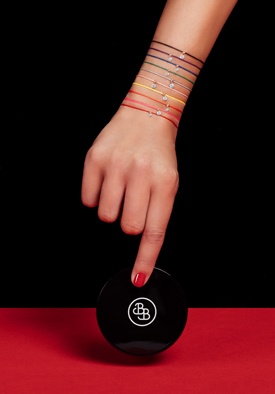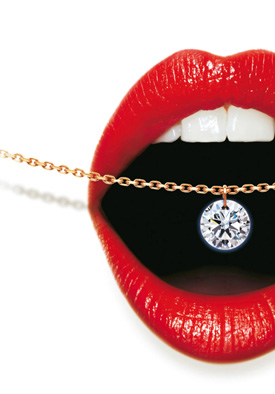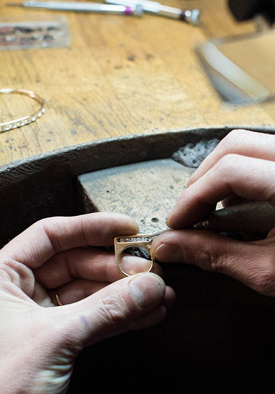Made in France
Since 2011, LA BRUNE & LA BLONDE has been creating jewelry that is MADE IN FRANCE, thus guaranteeing our customers the quality and responsiveness that is owed to them.
Today more than ever we must support the French craftsmanship to preserve jobs and protect our long-lived and valuable know-how.
Made in France
Since the creation of LA BRUNE & LA BLONDE in 2011, we are proud to sell jewellery entirely made in France, from its design to its production, including our primers and cases.
For LA BRUNE & LA BLONDE, it has always been an obvious choice, motivated by three reasons:
1. our desire to behave as a “responsible” player in our activity sector, choosing to manufacture locally with short circuits,
2. to bring to life the know-how and talent of French jewellery craftsmen, recognised (as in many other luxury goods professions) throughout the world,
3. rely on the capacity for innovation and reactivity of qualified workshops to be as close as possible to our customers’ expectations within a limited time.
Since 2011, our commitment to produce “MADE IN FRANCE” is unfailing. Today, more than ever, it is up to us to support French manufacturing and employment in France, to maintain our precious and historical know-how.
These craftsmen work with talent: working with gold requires precision, attention and rigour at all times. This know-how is reflected in each of our pieces.
Ask us for the moon!
Because the craftsmen who shape our jewels have fairy fingers, they are happy to give life to the most extravagant desires of our customers :
– a necklace with 32 Princess cut diamonds, just the right gift for a Princess’ 32nd birthday,
– a Funambule ring with 4 diamonds to celebrate the arrival of a second birth,
– a 0.55 carat solitaire for the 55th birthday of the lucky lady….
The choice of a French manufacture enables us to satisfy these special orders in a short time, which is not possible for a faraway manufacture.
Authenticity
All of our “LA BRUNE & LA BLONDE” jewels are sold with a certificate of authenticity.
Such certificate guarantees the 18-karat gold title and our diamonds quality which is essential to the beauty of our creations.
Color corresponds to G while purity to SI1.
These two criteria are essential to our NUDE DIAMOND concept as they are the keys to our stones’ beauty and brilliance.
The 4 Cs
The diamond.
A rare, magnificent, hypnotic gem.
Why is that so? Because the diamond has sealed more love declarations than any other stone.
Why is the diamond associated with eternal life, purity, perfection, power? Why has it been so fascinating for centuries? Why is it the most coveted stone?
Because of all the gems that our planet gives us, the diamond is by far the most magical. A magic that is explained by both its unbelievable physical and chemical properties making it the hardest stone (10 out of 10 on the Mohs scale) and the one with the most brilliance (one calls it adamantine brilliance).
Nevertheless, to objectively assess each diamond, an internationally recognized gradation system was established that allows to classify and estimate the value of any stone. This system has determined 4 criteria, named the 4 C’s.
C for Cut
C for Carat (weight)
C for Color
C for Clarity (purity)
That is a lot of C’s for a stone made of pure carbon which chemical element is also C.
The cut
This first criterion is the only one resulting from the craftsmanship of man. It is essential because the diamond’s brilliance depends on the quality of its cut.
Cutting of diamond is revealing its brilliance, its twinkling, its fire. The job of the lapidary is thus that of a light charmer.
A perfectly cut diamond is like a mirror: it captures the light and reflects it from facet to facet before sending it through the crown.
Each facet has to be precisely cut to reveal the gem’s full potential of brilliance.
The brilliant round shape with 57 facets is the most common cut but there are more than 350 cuts of diamonds, the most notable being the Heart, Princess, Pear, Emerald, Oval, Cushion and Marquise (created for the famous Marquise of Pompadour, Louis the XVth ‘ mistress ,who wished to pay homage to the perfect shape of her lips, … Once the diamond has been cut, two determining factors come into play: its polish and its symmetry.

The carat
The carat (ct) is the weight unit (not to be mistaken with the karat which is the unit used to weight the gold alloys). One carat, which reads “1 ct”, equals one fifth of a gram i.e. 0,2 grams.
If this criterion allows to define one art of the value of a gem, it is not sufficient, hence the 4 Cs.
That is why two stones weighing the same won’t necessarily have the same value.
The color
The color is essential to assess the value of a diamond.
That is why a scale of very subtle hints of colors going from “D” (exceptional “glacier white “color – very seldom found in nature) to Z (white that tends to yellow) was established to classify the white diamonds. The whiter the diamond, the rarer it is.
If most of the diamonds are white, there are some in other colors (yellow, pink, blue, orange, cognac ….), the rarest being the color red.
The clarity
Natural diamonds were created by the extreme heat and pressure from the depth of the earth over millions, even billions of years.
This totally natural process leads to all diamonds giving inclusions i.e. external or internal imperfections. Those diamonds with less inclusions are the one that are the purest which is the 4th criterion.
It is a scale established by the GIA (Gemological Institute of America) which classifies gems from FL (for flawless) to I3 (Inclusions 3).
Even when invisible, inclusions can influence the way light flows through the diamond. That is why this criterion is essential to the classification of any diamond.
• FL: flawless (perfectly pure)
No visible inclusion even when magnified 10 times
• IF: Internally Flawless (internal purity)
No inclusion, only a few marks visible when magnified 10 times.
• VVS1 and VVS2: Vey Very Small inclusions
There are small inclusions which are only visible when magnified 10 times and not to the naked eye.
• VS1 and VS2: Very small inclusions
Inclusions here are clearly visible when magnified 10 times, although minor.
• SI1 and SI2: Small inclusions
Visible when magnified 10 times
• I1, I2, I3: Imperfect
Inclusions perfectly visible whether to the naked aye or magnified 10 times.
The stone is obviously more opaque and thus less shiny.
